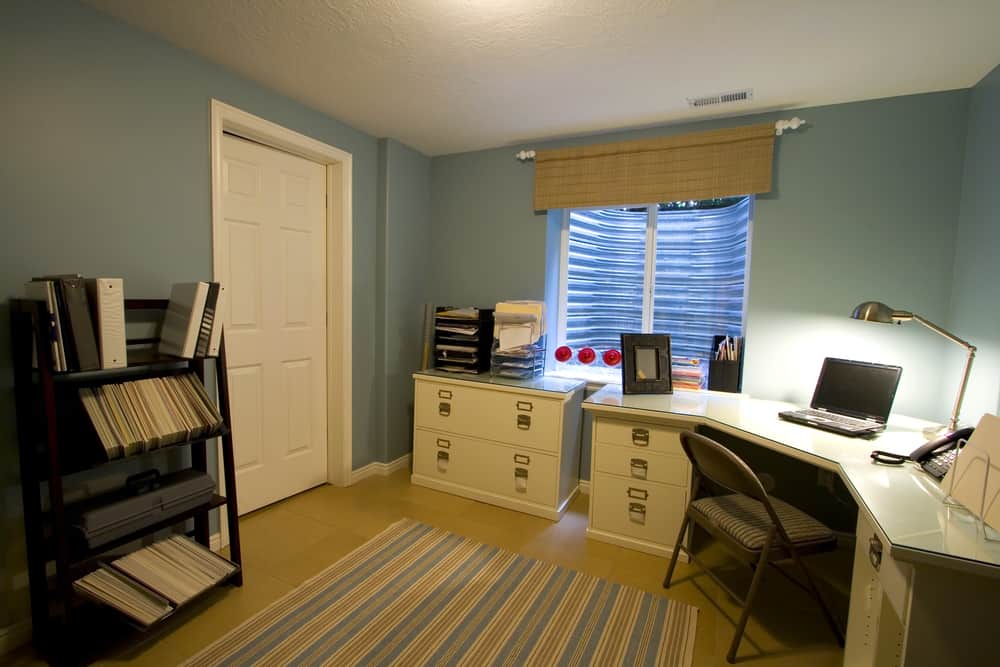On March 11, 2020, the World Health Organization (WHO) director-general, Dr. Tedros Adhanom Ghebreyesus, addressed the world. He delivered a message that showed it was not going to be business as usual anymore: “We have therefore made the assessment that COVID-19 can be characterized as a pandemic.”
Consequently, countries sprang into action, declaring lockdowns, forcing many people to work from home and others to lose their jobs.
As hundreds of millions of us found ourselves forced to work from home without any warning, hunching over sofas or beds, or having to make do with hard chairs became the order of the day, proper office ergonomics became a luxury.
However, this is likely to affect not just our health but also productivity and efficiency.
This article focuses on why it is still vital to ensure proper office ergonomics when setting up your office from home.
We define the term ergonomics, focus on what it means in the workplace, how ignoring it can result in injury, and offer tips on how you can set up an ergonomic home office.
What is Ergonomics?
The idea of ergonomics denotes a design process that ensures that products and spaces fit the people who use them.
The reasoning behind ergonomics is that when products and spaces are designed to fit the people who use them, the result will be better comfort and wellbeing, reduced risk of harm and injury, and enhanced productivity.
Even though ergonomics is often linked to the workplace, it applies in all areas where human beings interact with spaces and products.
For instance, motor vehicle manufacturers are concerned about ergonomics. Designers of movie theatres, lecture rooms, and toilet seats are also concerned about proper ergonomics.
Ergonomics in the Workplace

This article will focus on ergonomics as applied in the new workplace: the home office.
We aim to ensure that people working from home understand the elements that impact comfort and productivity in the office.
Resources like chairs, desks, electronic devices, and accessories need to be comfortable and allow users to maintain proper postures when working or performing tasks.
Let’s look at the main factors that you need to consider when setting up an ergonomic office at home.
A Comfortable Chair
Whether you are working from home or the office, you will likely spend most of your time sitting. This is why BU Today, a publication of the Boston University, advises that the first thing you need to consider is the chair you’ll sit on.
The BU Today article advises that an adjustable ergonomic office chair is your best option. It will save you from neck and lumbar discomfort.
The article advises that where the office chair is not available, “putting a firm cushion or tightly folded towel under your buttocks will raise your hips and ensure the curve of your spine is right, making sitting more comfortable.”
The Position of the Laptop and Monitor
Your laptop or monitor’s position determines how comfortable your back, shoulders, and neck will be as you work. If either the laptop or the monitor is too high, you’ll spend most of your time looking up, something that could strain your neck.
On the other hand, if the screens are too low, you will flex your neck forward. The idea is to find a level where your head will be vertical to your neck as you work.
Neutral Posture
Whatever you need to do as you work, the idea is that you should never feel as if you need the effort to maintain your posture. You should always be relaxed.
The hands should be placed on the table so that you are not using effort to keep them from going too low, or you need to keep them suspended in the air for you to type. You need the hands to rest comfortably on the table.
An Organized Work Area

Maintaining an organized work area not only reduces the risk of injury from tripping over things and falling, but it also ensures that you know where all the things are when you need them. This will improve productivity because you are not spending all your time looking for stuff.
Writing for SmallBusiness.Chron.com, a subsidiary of the Houston Chronicle, Devra Gartenstein, shows an organized office’s importance. She writes, “If you’ve ever spent twenty minutes looking for a piece of paper that would have taken you twelve seconds to file, you have some understanding of the value of an organized workplace.”
Gartenstein adds, “Physical systems that reduce clutter and that help you find what you need go a long way toward creating order and reducing stress.” If an organized office reduces stress, then it must be good for your overall health.
Related Article: 10 Desk Organization Tips from the Pros
Embracing Ergonomic Behavior
You can sit in the most comfortable chair in the most well-organized office, but all this will mean nothing if you don’t cultivate ergonomics behavior. Taking breaks, stretching, and moving around are crucial factors of an ergonomic office.
According to the medical news website, MedicalNewsToday.com, using the 20-20-20 principle can help alleviate eye strain. According to the website, the principle stipulates that “for every 20 minutes spent looking at a screen, a person should look at something 20 feet away for 20 seconds.”
Other ergonomic behaviors include ensuring adequate water on the work desk, taking breaks to walk outside and stretching, and eating proper meals.
Why is Ergonomics Important?

In the workplace, ergonomics aims to ensure that people are comfortable. This aim is based on the assumption that comfortable people are less likely to be stressed, tired, or ill. Therefore, they will come to work more and produce more.
When employees are productive, benefits accrue to both the employees and the companies they work for.
Let’s look at some reasons why ergonomics is essential:
Boosting Productivity, Quality, and Morale
By implementing ergonomics to the workstation, you become more comfortable, and productivity improves. This is a view supported by a study conducted by Natale Battevi and Nora Vitelli and published by the National Library of Medicine’s National Center for Biotechnology Information.
Battevi and Vitelli conclude that “Within approximately two years, thanks to changes in workplace layout and organization, a significant reduction of 22.7% in risk level [of upper limb biomechanical overload disease] was achieved and, at the same time, a 16% increase in productivity.”
The conclusions above imply that you can be productive working from home if you focused on setting up an ergonomic home office.
The productivity improvement, coupled with comfort, will likely make you look forward to working, and it boosts your morale.
If good ergonomics improves productivity, it can then be argued that poor ergonomics reduces staff efficiency, affecting the quality of their work or product.
What are Common Ergonomic Injuries?
According to the American Posture Institute, “When workers are subject to poor ergonomic environments, they are predisposed to preventable injuries and long-term health faults.”
The U.S. Department of Labor categorizes the injuries suffered by employees working in environments with poor ergonomics under a broad category known as Musculoskeletal Disorders (MSDs).
According to the Occupational Safety and Health Administration, “Musculoskeletal Disorders (MSDs) affect the muscles, nerves, blood vessels, ligaments, and tendons. Workers in many different industries and occupations can be exposed to risk factors at work, such as lifting heavy items, bending, reaching overhead, pushing and pulling heavy loads, working in awkward body postures, and performing the same or similar tasks repetitively.”
Let’s look at some of these common injuries:
Carpal Tunnel Syndrome: Is caused by pressure on the median nerve (running through the arm’s center). It results in a tingling sensation, numbness, and weakness in the hand.
Tendinitis: Results in pain and tenderness on the joint and often affects the elbows and knees, among other such joints.
Back Injuries: Even though many focus on poor lifting techniques when thinking about the causes of back pain, an article produced by DePaul University in Chicago, Illinois, points at poor posture too. It says, “Awkward postures increase strain on back muscles and can bend the spine into positions that can put pressure on discs and cause trouble.”
Muscle Strains: If the process of doing a specific job is not made to fit the person doing the job, the result is muscle strain, one of the most reported injuries at work. Muscle strain happens when a muscle is overstretched or torn.
Trigger Finger: Is a condition where the finger remains in a stuck position before snapping straight. The condition affects people whose work strains their hands.
What are the Costs of Ergonomics Injuries?
The U.S. Department of Labor estimates that around “two million workers suffer work-related musculoskeletal disorders every year, and about 600,000 lose times from work as a result.”
The department adds that “$1 of every $3 spent on workers’ compensation stems from insufficient ergonomic protection.”
As far back as 2001, the annual costs to the economy attributed to insufficient ergonomic protection were already estimated to be between $45 and $54 billion a year.
Setting Up an Ergonomic Home Office

When employees are working in the office, it’s usually the company they work for that has to be concerned about ergonomics.
However, as many of us work from home, the responsibility falls on our laps.
Below, we provide a few tips on how you can set up an ergonomic home office.
Get a Dedicated Workspace
It’s crucial that you dedicate a space in your home that you will use as your office. This will ensure that you can easily plan how to turn that space into an ergonomic office. If you work from different spaces, it can be challenging to ensure that your entire home always provides the resources to maintain the right posture.
Whatever space you chose to work from, it is crucial to focus on lighting. If the lighting is not right, you may find yourself needing to squint and move closer to the screen. This could compromise your posture.
Organize the Workspace
A cluttered workspace negatively impacts productivity because it makes it difficult to find stuff. It can also be dangerous because having things in the way can create a tripping hazard.
Stress levels increase when you’re continually looking for things because you don’t have a proper system for organizing your workspace. Take a few minutes before you start working to organize your office and your day.
Find a Comfortable Chair and Desk
The best chair is one that provides back support and has adjustable features. However, it’s essential to realize that no single chair will be suitable for all people. Thus, you will want to consider the kind of work you do and the climate of the area you work in when selecting a chair for your home office.
If possible, try the chair before you decide to buy it.
Ensure that your desk is large enough to contain objects or tools you work with, such as the phone, laptop, desktop accessories, and writing materials. A large space will ensure that everything is placed where it will be comfortable to work with.
It’s vital that as you select the chair and desk, you focus on your posture. For example, the chair should allow you to plant your feet on the ground. This is why an adjustable chair is the best. If you can’t get an adjustable chair, you may consider getting a footrest.
Your desk needs to allow you to sit up straight and have your screens at eye level. If you can’t change the desk, an adjustable laptop stand may assist.
Take Breaks
Listen to your body, and if you feel any discomfort, it may be a cue that you are tired or need to change something.
Get up at intervals to perform tasks that don’t require a laptop, such as phone calls and video meetings. Sometimes taking a break may mean doing a different task such as filing, which you can do standing.
It is also vital to ensure that you have dedicated work hours. If you are not careful when working from home, you’ll end up working all the time. This could compromise family time and leave you with no time to exercise or do other activities that may help you relax.
